Lucky escape from White Island two days before volcanic eruption
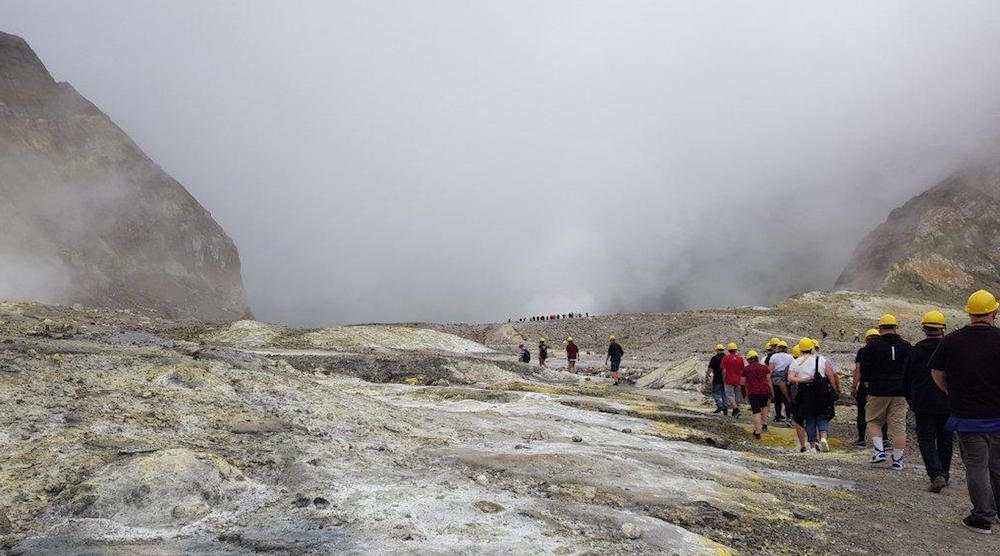
By Shoma Barat
Two days after the author’s visit, the White Island crater exploded killing and injuring many visitors to the island that day. Following is an account of how she felt visiting this unique and a wonderful island that reminded her how earth was born millions of years ago. The author offers respect and condolences to everyone involved in this very sad event.
We arrived at Mt Manganui, Tauranga, on our first visit to the North Island of New Zealand wondering what local attractions we could discover during our short two-day stay in this beautiful coastal town. Manganui beach had to be one of the attractions having been voted as New Zealand’s best beach and I could see why this was so.
The languid sandy beach had a transparency of freshly poured champagne in a beautifully crafted flute glass. The water was pristine, greenish blue and as the evening rays fell on its surf, the gentle splashing waves emitted sparkles creating a magical aura across its long stretch.
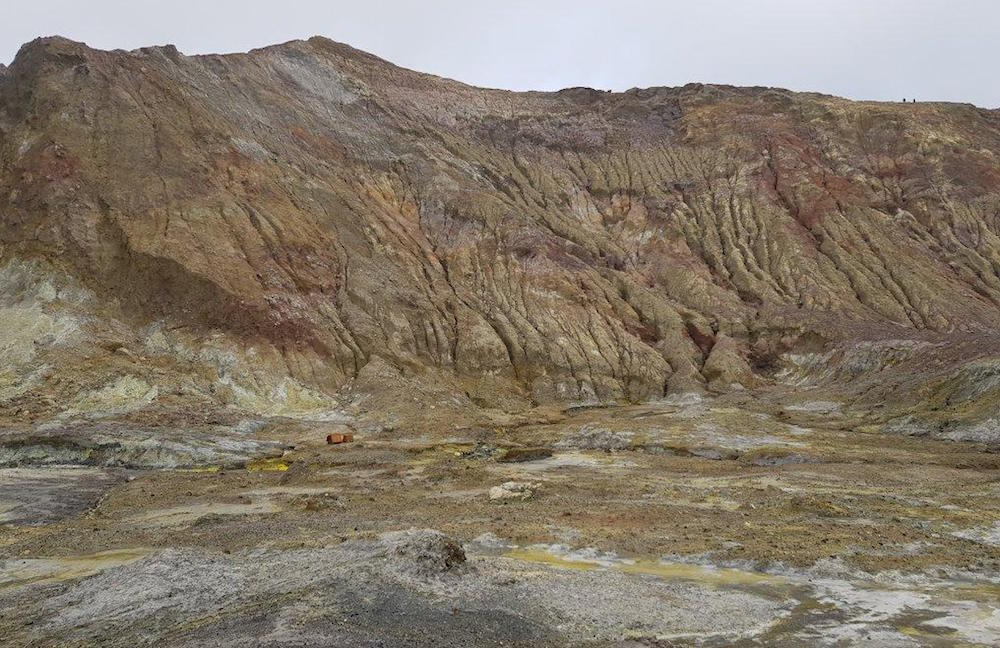
White Island is off Whakatane, a small tourist town about 90 kilometres south of Tauranga and is often the first spot for locals and tourists to embark on a life changing journey towards a very special viewing of a 156,000-year-old active volcano. We decided that weather permitting our next stop should be to visit this place and embark on this tour. So, the very next day we set sail or, rather, veered our car towards State Highway 29A to drive towards Whakatane.
New Zealand (NZ) mainly comprises two large islands – North and the South – with many little ones interspersed around the main islands. There are about 140 islands in the Bay of Plenty sitting in the eastern part of the North Island.
NZ is placed right within the ”˜Pacific Rim of Fires’, a name rightfully given to the island nation located in the far east corner of the Pacific Ocean between the Australian and Pacific tectonic plates. The geographical expanse is teamed with earth crusts and mountainous peaks which are still evolving to this day. A journey through the expanse of these islands would take visitors through the active geothermal landscapes of these young land masses to the convoluting mountains and fiords.
The North Island was created of sedimentation from the volcanic activities in this area about 540 Million years ago and is still being formed by the ethereal volcanic and geothermal activities. The South Island, on the other hand, is primarily made of land mass arising from collision of the Australian and the Pacific tectonic plates.
The landscape in the South Island is starkly different to its sister island in the North and has been carved by the gradual retraction of the glaciers from the last Ice Age. The fiords or the valleys created by the constant thawing and expansion of the permafrost of the glaciers are now filled with fresh glacial water lakes and rivers which meet the rough southern oceans. This makes it a wondrous natural reserve for the teaming flora and fauna of the southern seas.
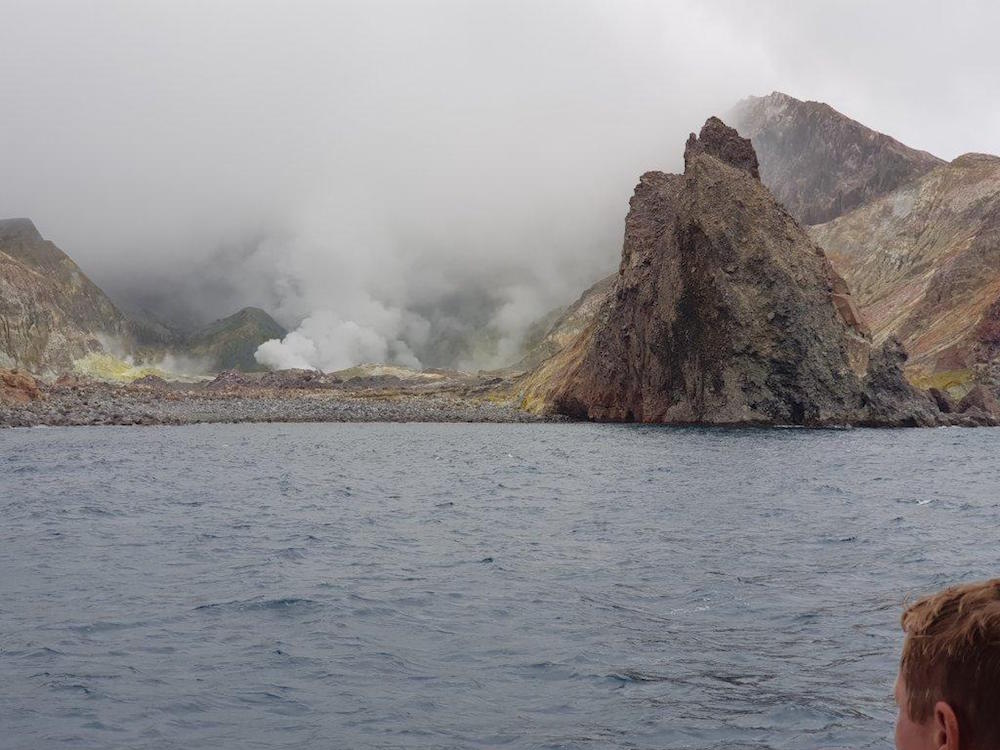
The visit across these two islands takes the traveller back to the beginning of earth’s history through its post volcanic nature reserves and its post glacial era fiords and sea scapes.
On the day of our visit to the White Island, we drove to Whakatane taking in the beautiful landscape and thanking our luck for getting a reserved seat on the tour cruise that would take us to the island for a rare glimpse of the volcano. The boat ride to the island would take us 50 mins, a quick trip around the island and back to the boat for a light lunch and back to the Whakatane base.
Once we reached the island we tugged on a little inflatable dingy towards a small jetty, custom made for such landings. We climbed a ladder and on to a boulder path to a plateau at the edge of the island. Walking on the island reminded of an alien landscape completely void of any vegetation. Rock formations from the volcanic eruptions over the hundreds of thousands of years were strewn at the base of the tall cliffs that were created with earth deposits from the constant bellowing of basaltic rocks from the mouth of the crater.
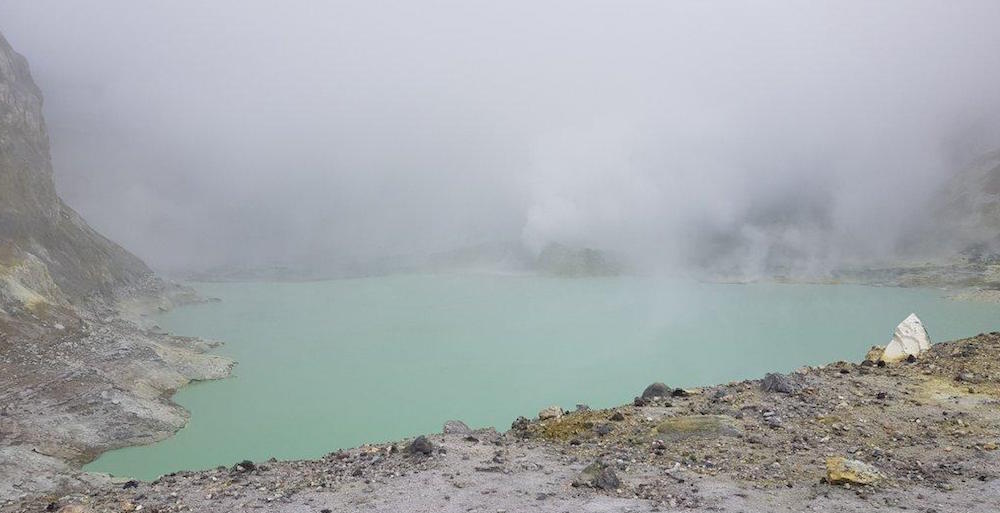
Walking towards the rough but flat surface of the middle plateau of the island we could witness deposits of sulphur that oozed from the main chute and solidified on the older landscape. Further down the west and north-east side of the cliffs, fumes of boiling water mixing with the liquid sulphur could be seen.

The atmosphere reminded me of my student days when we spent our days experimenting in the chemistry lab with sulphuric and hydrochloric acids. Sulphur is known to cure many dermatological and chronic inflammations and the diluted amount of this in the island atmosphere was generally considered safe and perhaps even therapeutic.
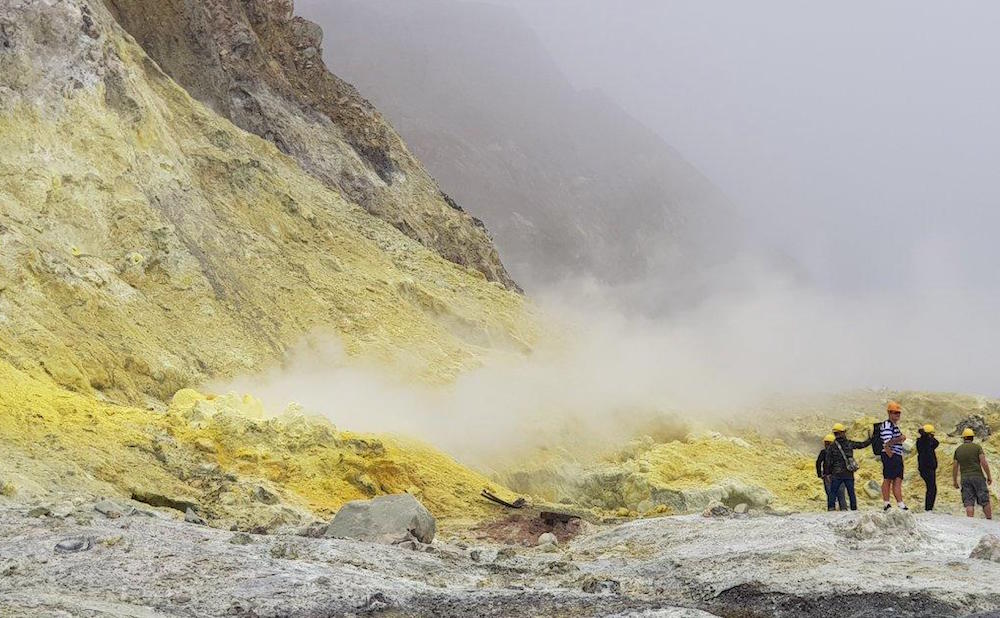
Occasionally, a daft of fumes would reach one’s nostrils irritating the nasal passage. This was normal as a mild acidic solution is created when the gaseous sulphur reacts with the water content of the mucosal layer of the nostril passage. We got used to this in a few minutes and were in awe of the kaleidoscope of colours formed due to the reactive liquid that would mix with the rocky elements and deposit chemicals with varying colours. One could witness the beautiful blue hues of copper sulphate to the stark red of iron oxide.
Sulphur was once mined at the island with the early miners staying back at the island due to the dangers of regular commute to work via the rough seas between the mainland and the island.
There was an earlier disaster on White Island in 1914 when 10 miners went missing due to an overnight landslide believed to have emerged from the east end of the volcanic crater. Towards the south-eastern end of the island and back towards the jetty, we could see the remnants of the mining factory. The foundations of the old building structures and the incinerator that was once used to melt sulphur for ease of transport to the main land were still evident.
From the south-east end of the cliffs, we slowly moved towards what looked like the viewing platform of the crater of the active volcano. All volcanic craters collect water around it displaying a chasm of a valley filled with a blue water body.
At the far end of the crater at the base of the north-eastern cliffs we noticed a thick smoke of steam and ashes being bellowed from an almost invisible pit. The stony crust of the cliffs would create a natural resistance to the molten rocks and ashes waiting to be released into the void via the relatively small vent of the volcanic chute. The release of this pressure would create a high stereophonic sound on its release creating a hiss and a snore of a legendary dragon.
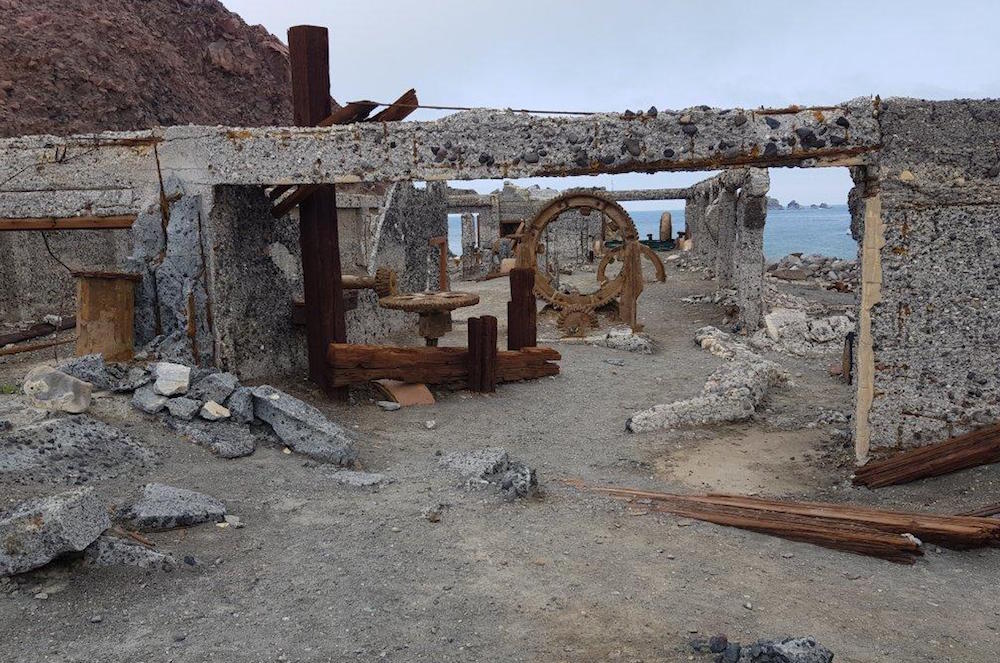
The scene looked straight from a movie set depicting a launching pad of an alien world where a spacecraft of a more progressed civilisation would use as a landing and launching ground. The feeling was that of reverence towards mother nature mixed with a degree of eerie muddled with a green curiosity to know more of the processes beneath that would create this post-apocalyptic atmosphere.
There was a sense of reckoning to have witnessed this strange phenomenon. Yet it was so close to the fact that this was how our own little planet was born, a burning ball ejecting from its very own star, Sun, gradually cooling off to its current beauty. This was a travel through time and we were at the centre seat witnessing the beginnings as it would have been before my living genealogy of all lives set its footprint on this substrate.
There are times when one needs to be given a wake up call about where the current environment is taking us. A moment through time to make the collective realisation that there is just so much space time and energy that is needed to create a beautiful masterpiece. Yet one may compress this time space and careful universal sums by programming a total disregard to evolution and forging towards a mass annihilation of the very spring that has provided the elixir of living in the first place.
We returned that day feeling belittled and humbled. Hoping that someday there would be enough awareness that could help contribute towards a more sustainable future and help sustain the environment for greater and better evolution of everything that is beautiful in this planet.
Whakaari is an active volcano with a possibility of erupting at any moment. This would soon become evident in the next couple of days. It was a sheer stroke of luck that the event did not happen during this visit.
Pics. by Shoma Barat
Short URL: https://indiandownunder.com.au/?p=14593
